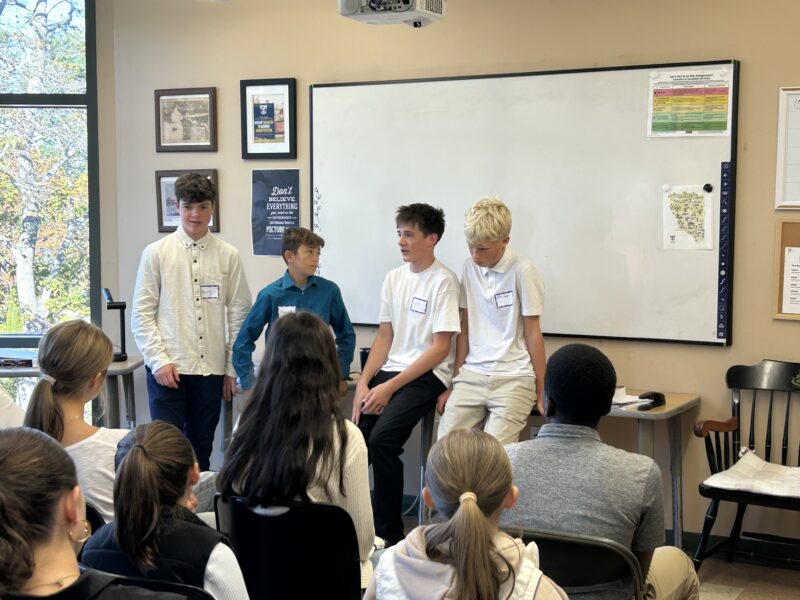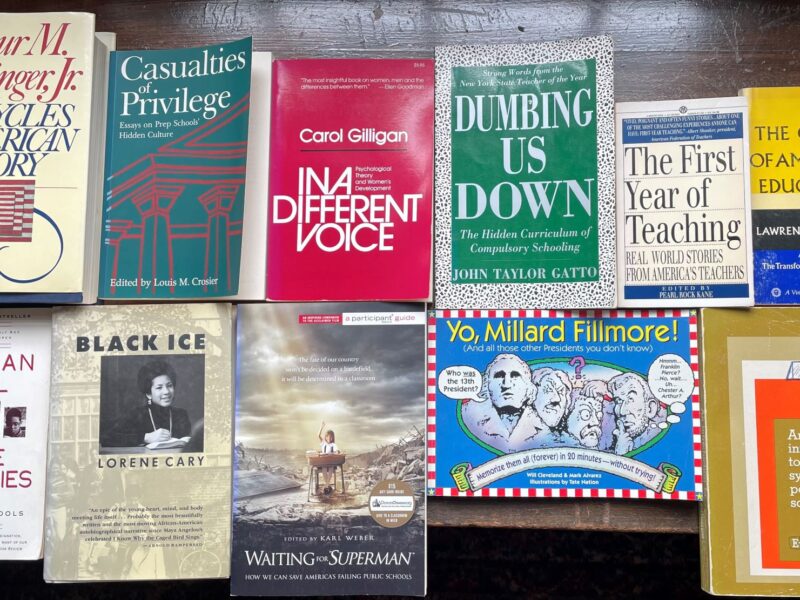
In January, the Portland Press Herald published a piece I wrote expressing my belief that it’s time for a new relationship between our nations’ secondary schools — public or private — and our colleges. Here’s the link:
Assuming you don’t have a subscription to the PPH…
Truth be told, to me, it’s fingers on the proverbial chalkboard—Remember chalkboards?—whenever I hear college counselors, administrators, or even parents assuredly pronounce, “But we can’t teach X because the selective colleges want to see Y.”
The time has come for secondary-level educators to cancel the monopoly long enjoyed by college admissions departments in dictating our curricular priorities. A more holistic approach to middle and secondary education will ultimately produce better college students, not to mention more fulfilled adults. What’s more, once they get used to the change in priorities, the colleges themselves will be better places in which to learn, teach, and live. Meanwhile, the graveyard of attempted school improvement initiatives designed to meet our long-standing college-centric priorities continues to grow unabated.
Suffice it to say that the idea of educational reform has been an American obsession for a long, long time. As a second-generation educator, my first memory of the “latest thing” goes back to childhood when I heard my parents talking about this idea they called the “New Math.” (I think my ears perked up because I had already had enough trouble with the old version and shuttered at the assumption that the revised edition would only be harder.)
Since then, it’s been quite the revolving door: Values Clarification . . . Progressive Ed . . . Open Classrooms . . . Mainstreaming . . . Self-Pacing . . . Busing . . . Special Ed . . . Back-to-Basics . . . Bilingual . . . the ever-evolving alphabet soup of Learning Differences (ADD, ADHD, ASD, ODD, etc.) . . . Experiential Learning . . . A Nation at Risk . . . Merit Pay . . . No Child Left Behind . . . Anti-Bullying . . . Charters . . . Magnets . . . Multiple Intelligences . . . “Testmania” (my word) . . . SEL . . . E-Learning . . . Distance Learning . . . Home-schooling . . . Whew!!! That’s a lot of coming and going.
It’s time for a time-out. Time to address with uncompromising honesty: What is the true objective driving these attempted reform initiatives? Who are we serving? Schools and colleges?… Or, kids and families? Sometimes we get the two priorities mixed up.
Hey, college is great. The goal of gaining admission to a “good school” provided a healthy and productive goal for me as a youngster. And the four years that came as a result were profoundly enriching in multiple ways. The pursuit of and the benefits derived from college also had a similar positive impact on my own children. Furthermore, my career has been spent in college preparatory schools and I believe strongly in the intrinsic value of rigorous college preparatory academics. However, . . .
Many schools seem to have ended up in a Catch-22 trap where they become preoccupied with getting kids to be good at school in order to prepare them for . . . more school. We live in a time where our students, parents, and even the schools themselves sometimes seem unsure of themselves when it comes to drawing the line separating genuine curiosity from credential accumulation. College might well be a much more exciting adventure if our high schools were less conscious of college preparation and more focused on providing a uniquely enriching experience unto themselves.
And if we all did it, the colleges would ultimately go along. Not only are there a lot more of us than there are of them — by a factor of over 4-to-1 — if you look at the numbers below, you will see that the colleges and our kids share a mutual leverage. They truly need each other.*
Onward, Malcolm Gauld
*Rounded up/down:
– as of September 2023, the National Center for Education Statistics (NCES) shows 6,000 colleges currently serving 16M undergraduate and 3M graduate students.
– The NCES also shows 27,000 high schools (both public and private) serving 17M students.



